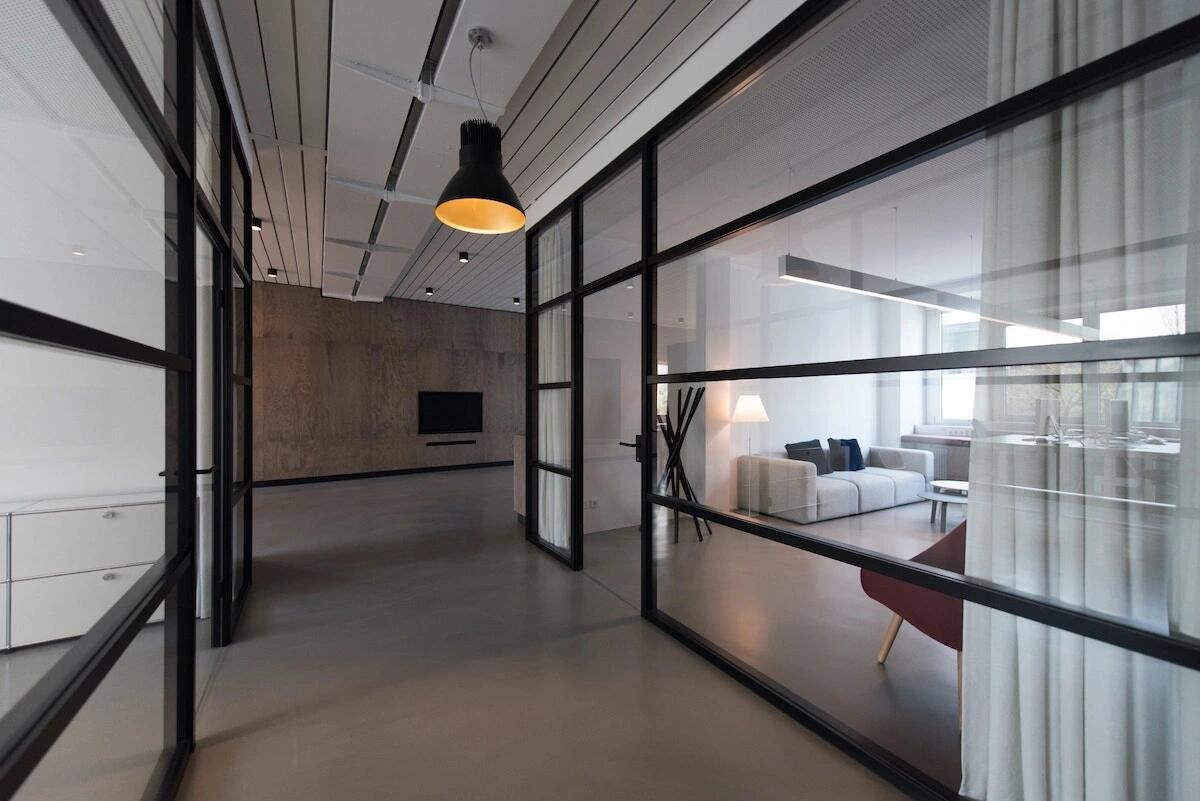In the realm of energy-efficient lighting solutions, dimmers have emerged as a key player, offering not just aesthetic appeal but also significant cost savings. While many may view dimmers as mere gadgets to adjust lighting levels, their technical intricacies reveal a deeper and more substantial impact on energy consumption and overall efficiency. This blog will delve into the technical aspects of dimmers, elucidating why they are not only worth the investment but also how they contribute to substantial long-term savings.
Understanding dimmer technology
Dimmers operate by adjusting the voltage supplied to a light source, controlling the intensity of illumination. The two main types of dimmers are leading-edge and trailing-edge, each employing distinct technologies for voltage modulation.
Leading-edge dimmers are the traditional choice and work by cutting off the leading edge of each half-cycle of alternating current (AC) waveform. This method is effective for incandescent bulbs but may cause compatibility issues with newer, energy-efficient lighting technologies like LEDs.
Trailing-edge dimmers, on the other hand, are designed to work seamlessly with modern lighting technologies, particularly LEDs. They cut off the trailing edge of the AC waveform, offering a smoother and more reliable dimming experience.
Energy efficiency of dimmers
Dimmers contribute significantly to energy efficiency by reducing the amount of power supplied to the lighting system. As the voltage is lowered, the power consumed by the bulbs decreases proportionally. This is in stark contrast to on/off switches, where the lights are either fully on or off, consuming the maximum rated power.
Consider a scenario where a dimmer is set to 50%. In this case, the power consumed by the lights is only 50% of the maximum, resulting in a direct energy saving. This not only reduces electricity bills but also extends the lifespan of the bulbs, as they operate at a lower temperature when dimmed.
Dimmers and LED technology
The compatibility of dimmers with LED technology is crucial in the current era of energy-efficient lighting. Unlike incandescent bulbs, LEDs are semiconductor devices that operate on direct current (DC). Dimmers designed for LEDs must convert the incoming AC to DC while maintaining a stable voltage to ensure optimal performance.
Modern trailing-edge dimmers are specifically engineered to accommodate the unique requirements of LEDs. They use advanced circuitry to convert AC to DC efficiently, preventing issues such as flickering and buzzing that may occur with incompatible dimmers.
The impact of dimming on LED lifespan
Dimming not only reduces energy consumption but also contributes to the longevity of LED bulbs. The stress caused by constant voltage fluctuations and thermal cycles is minimized when LEDs are operated at lower intensities. As a result, dimming can extend the lifespan of LED bulbs, providing an additional layer of cost-effectiveness in terms of reduced maintenance and replacement costs.
Smart dimming systems and energy management
The advent of smart home technology has introduced a new dimension to lighting control. Smart dimming systems, integrated with home automation platforms, offer users the ability to schedule, monitor, and remotely control their lighting. This level of control enhances energy management by allowing users to optimize lighting levels based on specific needs and preferences.
Furthermore, smart dimmers often come equipped with energy monitoring features, providing real-time data on energy consumption. This information empowers users to make informed decisions about their lighting usage, identify potential energy-saving opportunities, and track the impact of dimming on overall energy efficiency.
Dimmers and demand response programs
Dimmers play a crucial role in demand response programs, where utilities encourage consumers to reduce their electricity consumption during peak demand periods. By incorporating dimmers into lighting systems, consumers can actively participate in demand response initiatives without compromising comfort or convenience. Dimming lights during peak hours helps alleviate strain on the electrical grid and can result in financial incentives for participating users.
Installation considerations
While the benefits of dimmers are evident, proper installation is paramount to realizing their full potential. Incorrectly installed dimmers can lead to issues such as flickering, buzzing, or reduced bulb lifespan. It is crucial to ensure that dimmers are compatible with the specific types of bulbs being used and that they are installed according to manufacturer guidelines.
Dimmer integration with home energy systems
In addition to smart home integration, dimmers can seamlessly integrate with broader home energy management systems. These systems monitor overall energy usage within a household and optimize various devices, including lighting, for maximum efficiency. By incorporating dimmers into this holistic approach, users can achieve a more comprehensive and fine-tuned control over their energy consumption.
Dimmers in commercial and industrial settings
While the focus has primarily been on residential applications, dimmers also play a vital role in commercial and industrial settings. Large office spaces, warehouses, and manufacturing facilities can benefit from the versatility of dimmers in creating adaptable lighting environments. Moreover, the energy-saving potential is amplified in these larger settings, leading to substantial operational cost reductions.
Lifecycle cost analysis of dimmers
To truly understand the economic benefits of dimmers, a lifecycle cost analysis is essential. This involves evaluating not only the initial investment in dimmers and compatible lighting systems but also factoring in ongoing energy savings, reduced maintenance costs, and potential incentives from energy efficiency programs. The long-term cost-effectiveness of dimmers becomes even more evident when considering the extended lifespan of bulbs and the lower frequency of replacements.
Dimmers and circadian rhythms
The impact of lighting on human health and well-being is an evolving area of research. Dimmers, with their ability to adjust lighting levels, offer the potential to align artificial lighting with natural circadian rhythms. Tunable white LED bulbs, when combined with dimmers, can simulate the changing color temperature of natural sunlight throughout the day. This not only enhances the visual comfort of occupants but also positively influences mood, productivity, and overall health.
Future trends and innovations in dimmer technology
The field of lighting control is dynamic, with ongoing innovations in dimmer technology. The emergence of wireless dimming solutions, improved compatibility with emerging lighting technologies, and advancements in user interfaces are shaping the future of dimmer systems. Understanding these trends can guide consumers and businesses in making informed choices that align with the latest developments in the field.
Calculating potential savings for the average household
Now, let’s delve into the specifics of how much the average household could save by incorporating dimmers into their lighting systems. The potential savings can be assessed through two primary factors: energy cost reduction and the extended lifespan of bulbs.
Energy cost reduction
Dimmers contribute significantly to reducing energy consumption. According to the U.S. Department of Energy, dimming lights by 25% can result in a 20% energy savings, while dimming by 50% can lead to a 40% reduction in energy usage.
Let’s consider a hypothetical scenario for an average household with a monthly lighting bill of $30. If the household adopts dimmers and manages to achieve a 30% reduction in energy consumption, this translates to a monthly savings of $9 (30% of $30).
Over a year, the potential energy cost savings would be $108 ($9/month x 12 months).
Extended bulb lifespan
The extended lifespan of bulbs due to dimming also contributes to cost savings. LED bulbs, for instance, typically last much longer when operated at lower intensities. While the exact extension of lifespan can vary, let’s assume a conservative estimate of a 10% increase in the lifespan of LED bulbs.
If the average lifespan of an LED bulb is 15,000 hours, a 10% increase would result in an additional 1,500 hours of operation. Considering an average usage of 4 hours per day, this equates to 375 extra days of bulb life.
Now, let’s factor in the cost of LED bulbs. A standard LED bulb might cost around $5. If the household needs to replace bulbs every two years without dimming, extending the replacement interval to 2.5 years due to dimming results in a savings of $5 per bulb.
If the average household has 20 bulbs, the potential savings would be $100 over the extended lifespan of the bulbs.
Total potential savings
Combining the energy cost reduction and the extended bulb lifespan savings, the total potential savings for the average household over a year could be $208 ($108 from energy savings + $100 from extended bulb lifespan savings).
It’s essential to note that these calculations are estimates, and actual savings may vary based on factors such as regional energy prices, the number of bulbs in the household, and individual usage patterns.
Improve energy efficiency with Terrapin Electric
In conclusion, the technical advantages of dimmers extend far beyond the ability to create ambiance and set the mood. Dimmers, particularly those designed for modern lighting technologies like LEDs, play a pivotal role in energy efficiency, cost savings, and overall sustainability. By understanding the intricacies of dimmer technology, consumers can make informed decisions that not only enhance their lighting experience but also contribute to a greener and more economically viable future.
Investing in dimmers is not just about adjusting light levels; it’s about embracing a smarter, more efficient approach to lighting that pays dividends in both the short and long term. The potential savings for the average household, both in terms of energy costs and the lifespan of bulbs, underscore the financial benefits of incorporating dimmers into everyday lighting systems.
As technology continues to advance and dimmer solutions evolve, the path towards energy-efficient, cost-effective lighting becomes increasingly accessible to homeowners seeking to make a positive impact on both their wallets and the environment. If you’re interested in reducing energy consumption by installing dimmers for lighting, contact us today to get started.


